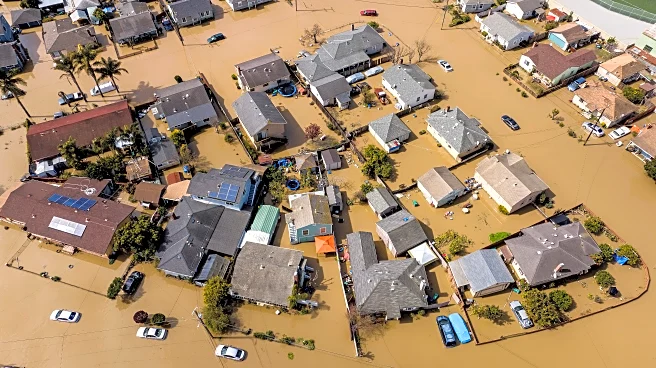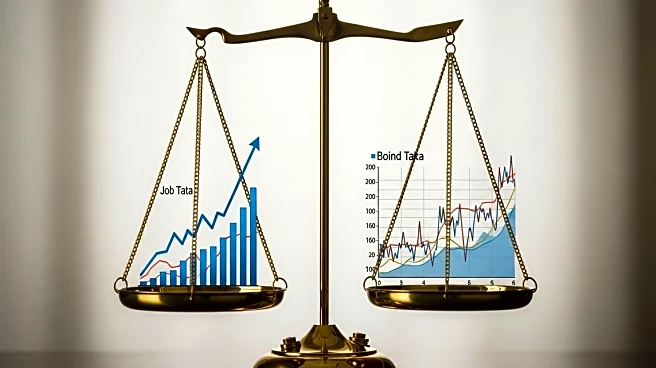What's Happening?
Mortgage rates have been a focal point for homebuyers, with recent trends showing a decrease from over 7% at the start of 2025 to an average of 6.13% before the September Federal Reserve meeting. The National Association of Realtors (NAR) has identified a 6% mortgage rate as a critical threshold that could significantly impact the housing market, making homes affordable for millions more households. Fannie Mae's latest Economic and Housing Outlook forecasts that mortgage rates will end 2025 at 6.4% and drop to 5.9% by the end of 2026. This prediction marks a shift from earlier forecasts that expected rates to remain above 6% until at least 2027. Danielle Hale, chief economist at Realtor.com, supports this outlook, noting that mortgage rates are likely to remain in the 6% range through 2026.
Why It's Important?
The potential drop in mortgage rates below 6% is significant for the U.S. housing market, as it could unlock affordability for approximately 5.5 million more households, including 1.6 million renters. This change could lead to increased home buying activity, with NAR estimating that about 10% of these households might purchase homes within the next 12 to 18 months. Lower mortgage rates can also stimulate the housing market, as evidenced by a 4% increase in home sales between July and August when rates dipped slightly. The forecasted rate decrease could lead to heightened competition among buyers and potentially higher listing prices, impacting both buyers and sellers in the real estate market.
What's Next?
As mortgage rates are anticipated to drop, homebuyers may face increased competition and higher prices. Danielle Hale advises potential buyers to consider purchasing before rates fall further to avoid the rush and benefit from lower competition. Additionally, buyers can explore options like mortgage buydowns to secure better rates now, although this requires higher upfront costs. Builders may offer attractive deals on unfinished homes to move inventory quickly, potentially providing lower rates for initial years. The housing market is expected to see increased activity, with Fannie Mae predicting home sales to rise to 4.72 million by the end of the year and further to 5.16 million in 2026.
Beyond the Headlines
The anticipated drop in mortgage rates could have broader implications for the U.S. economy, potentially stimulating consumer spending and economic growth. Lower rates may also influence housing policies and affordability initiatives, as more households gain access to homeownership. The shift in rates could affect financial markets, particularly the bond market, as mortgage rates are closely tied to the 10-year Treasury rate. Additionally, the real estate industry may see changes in investment strategies and development plans as builders and lenders adjust to the evolving rate environment.












